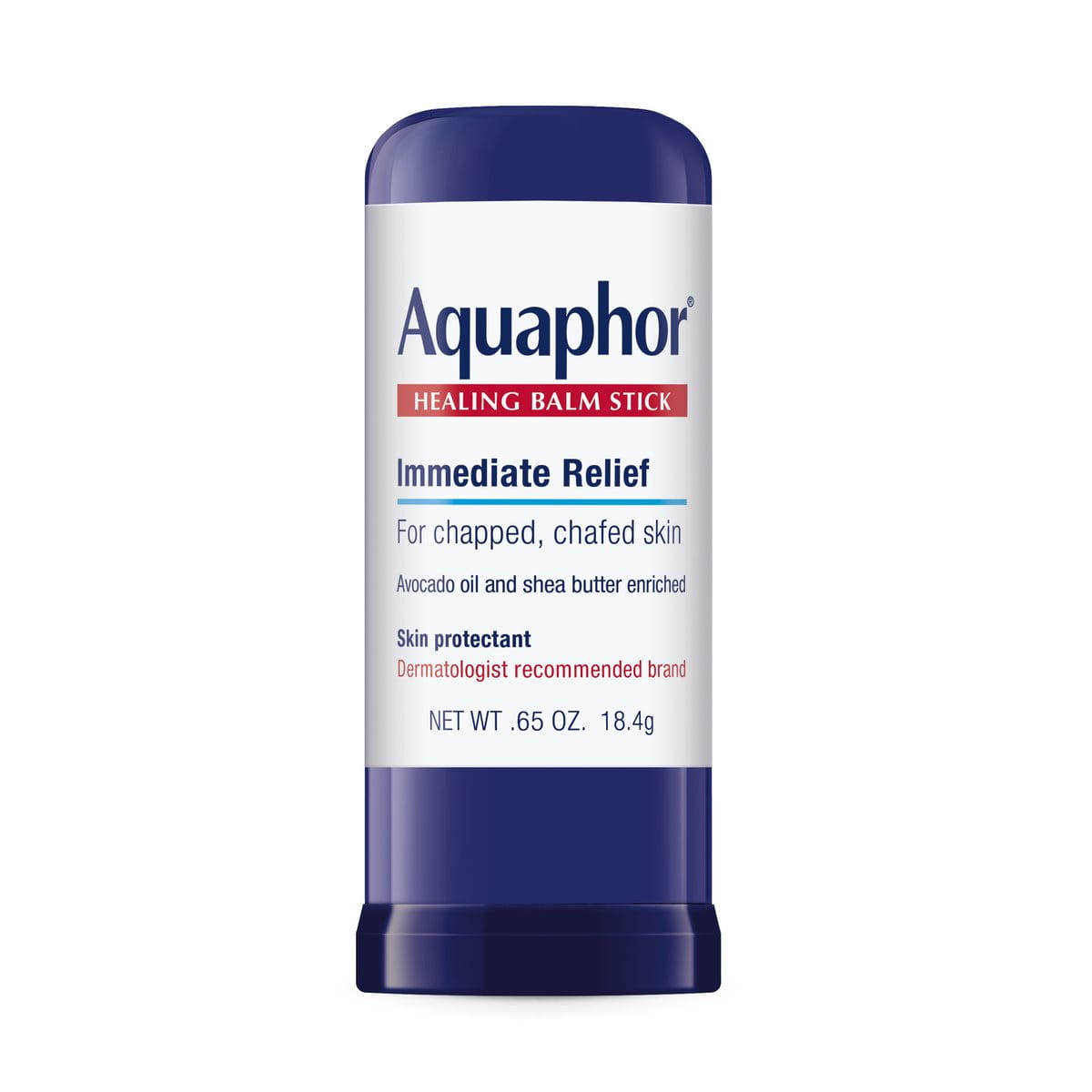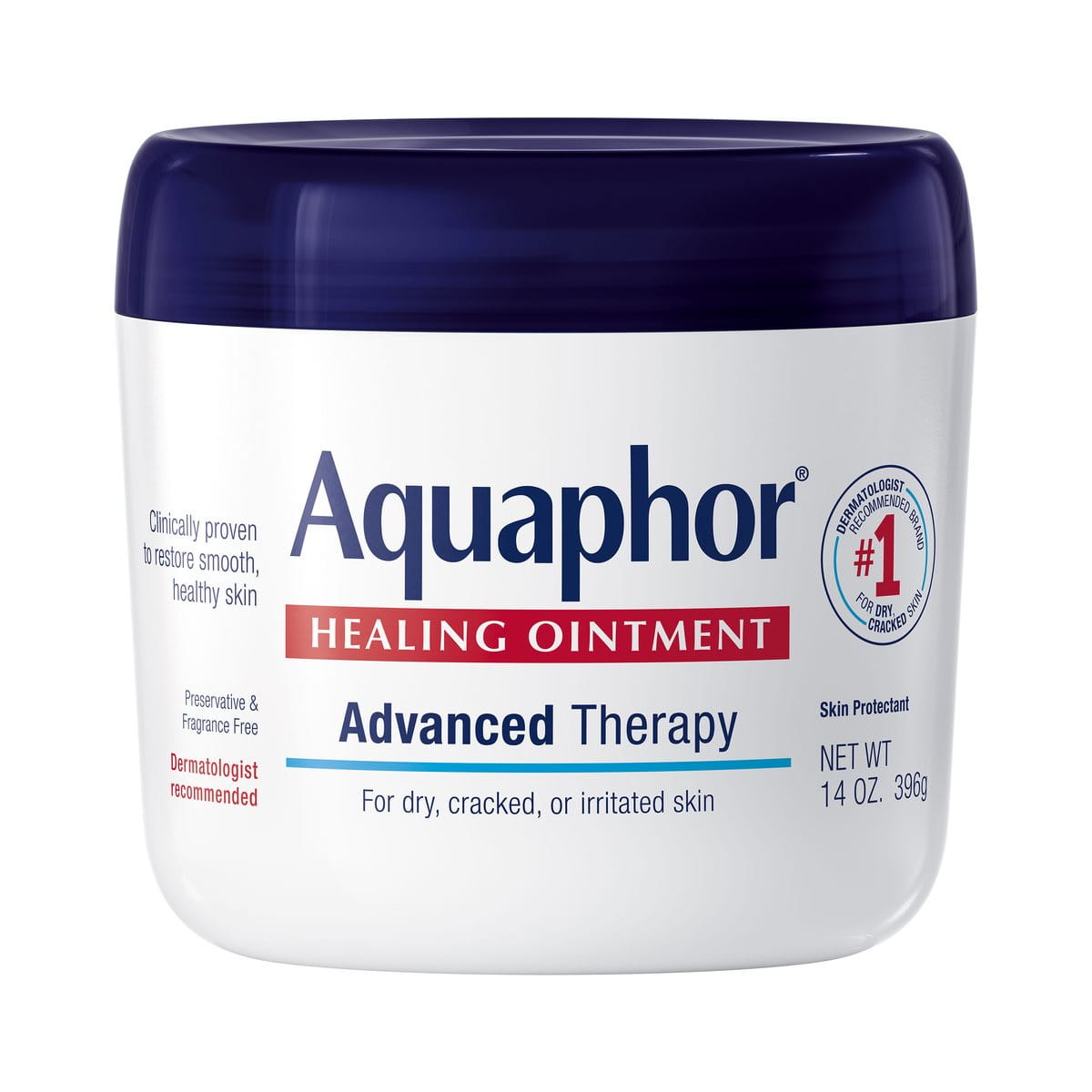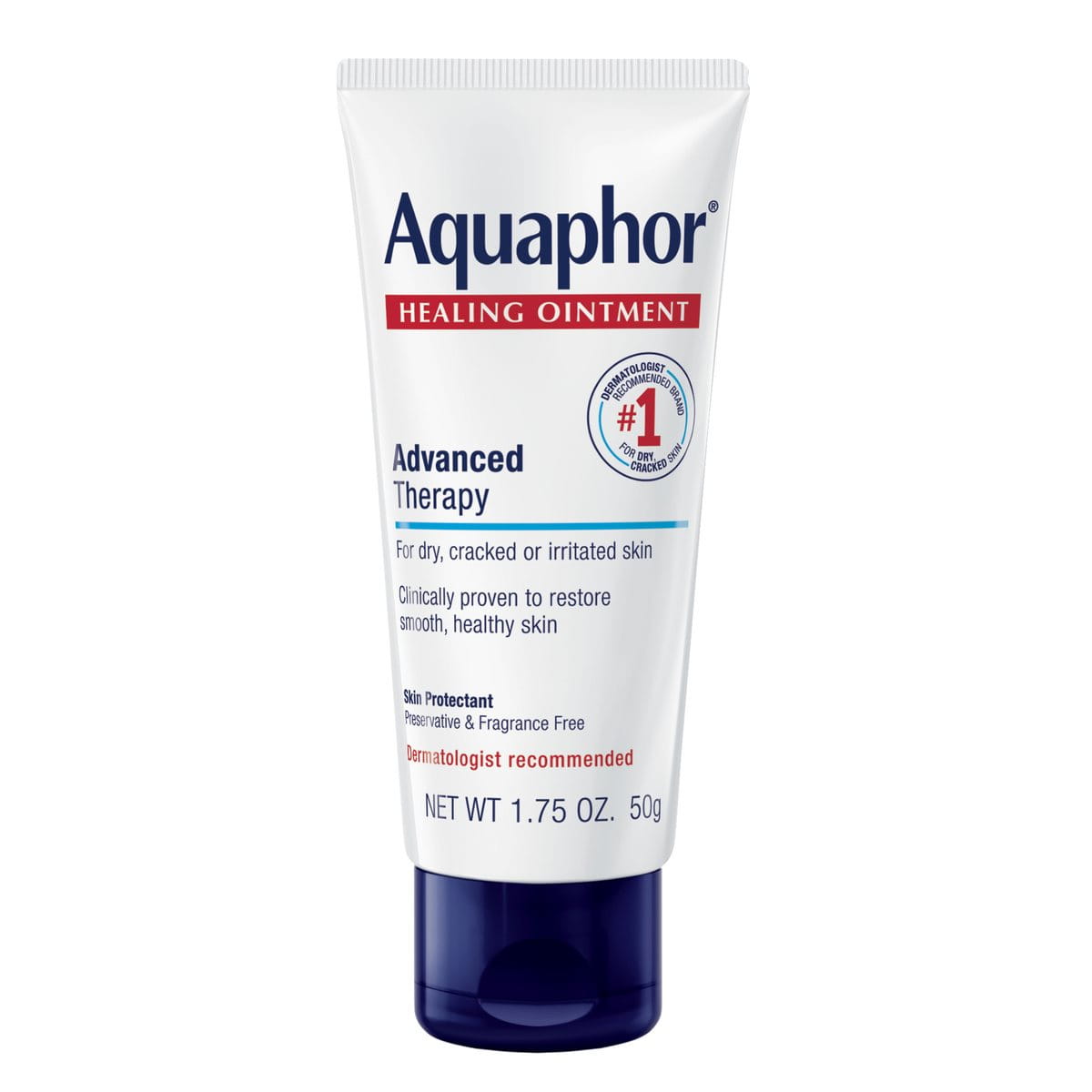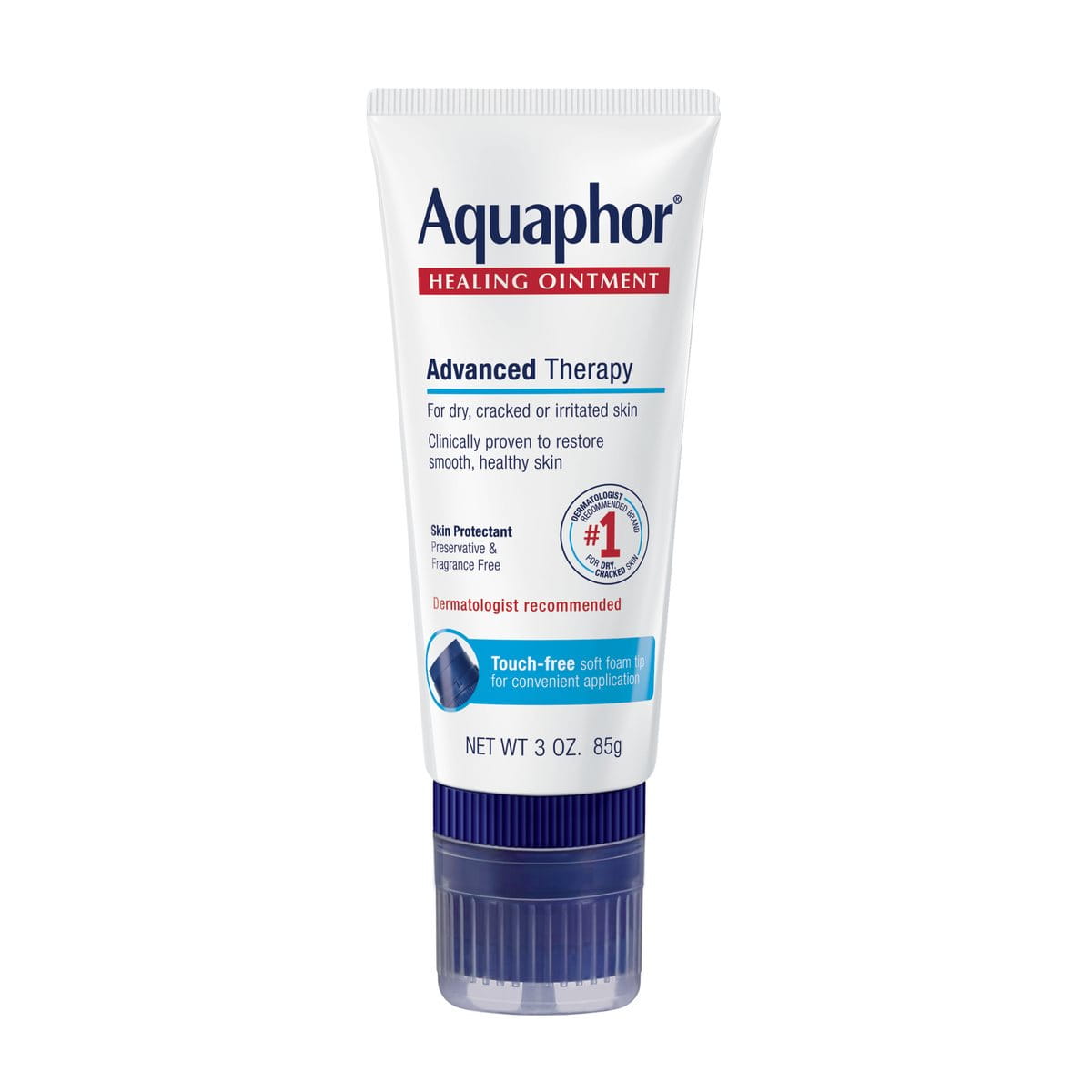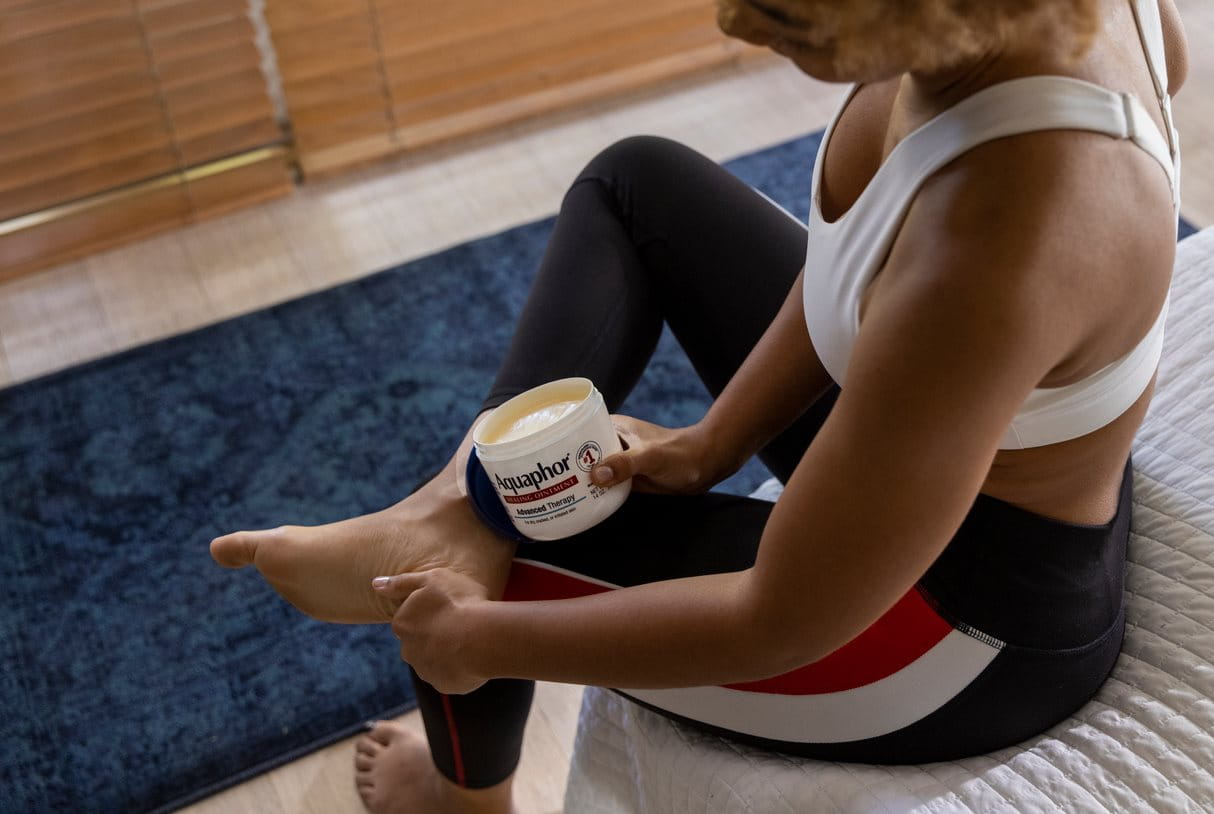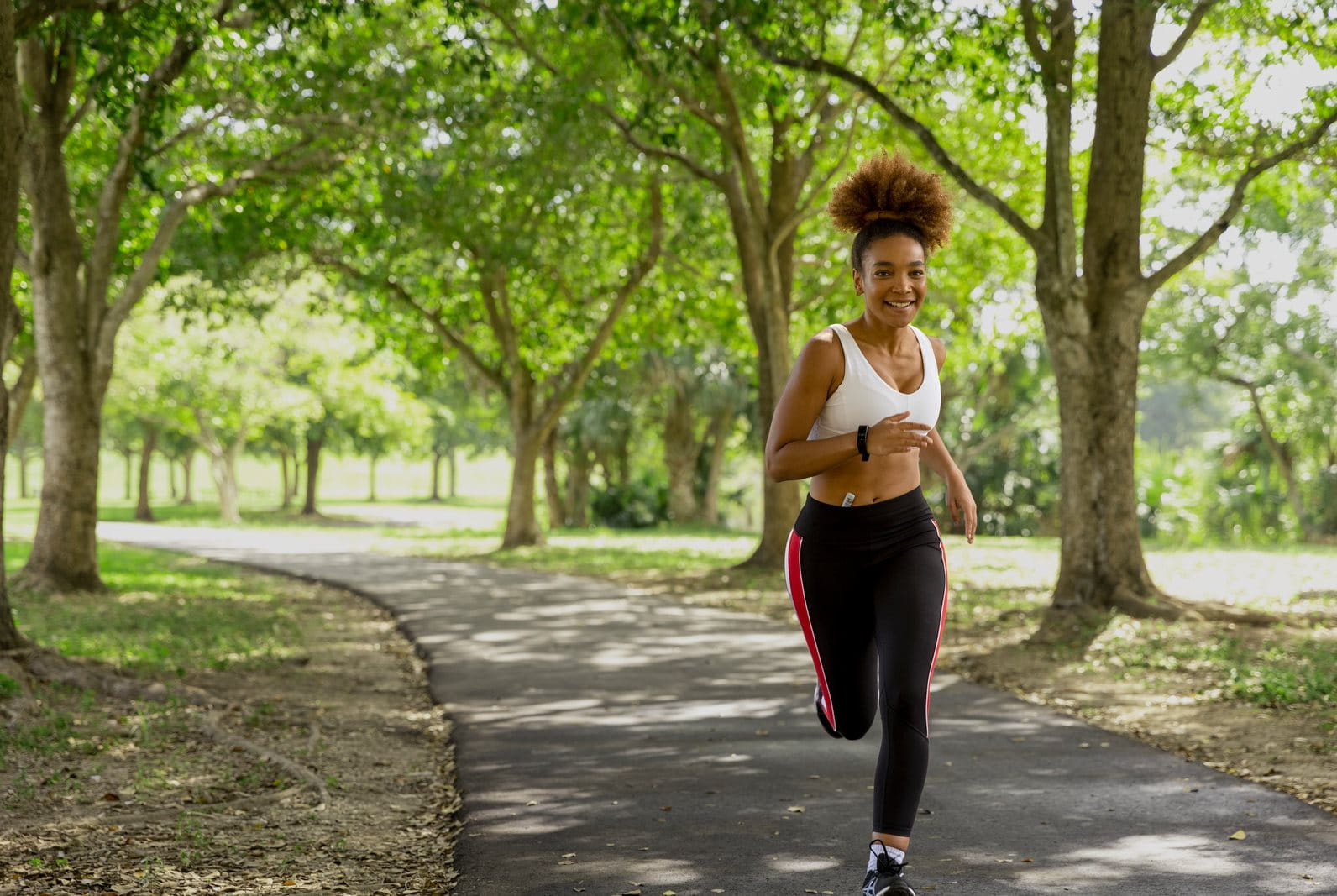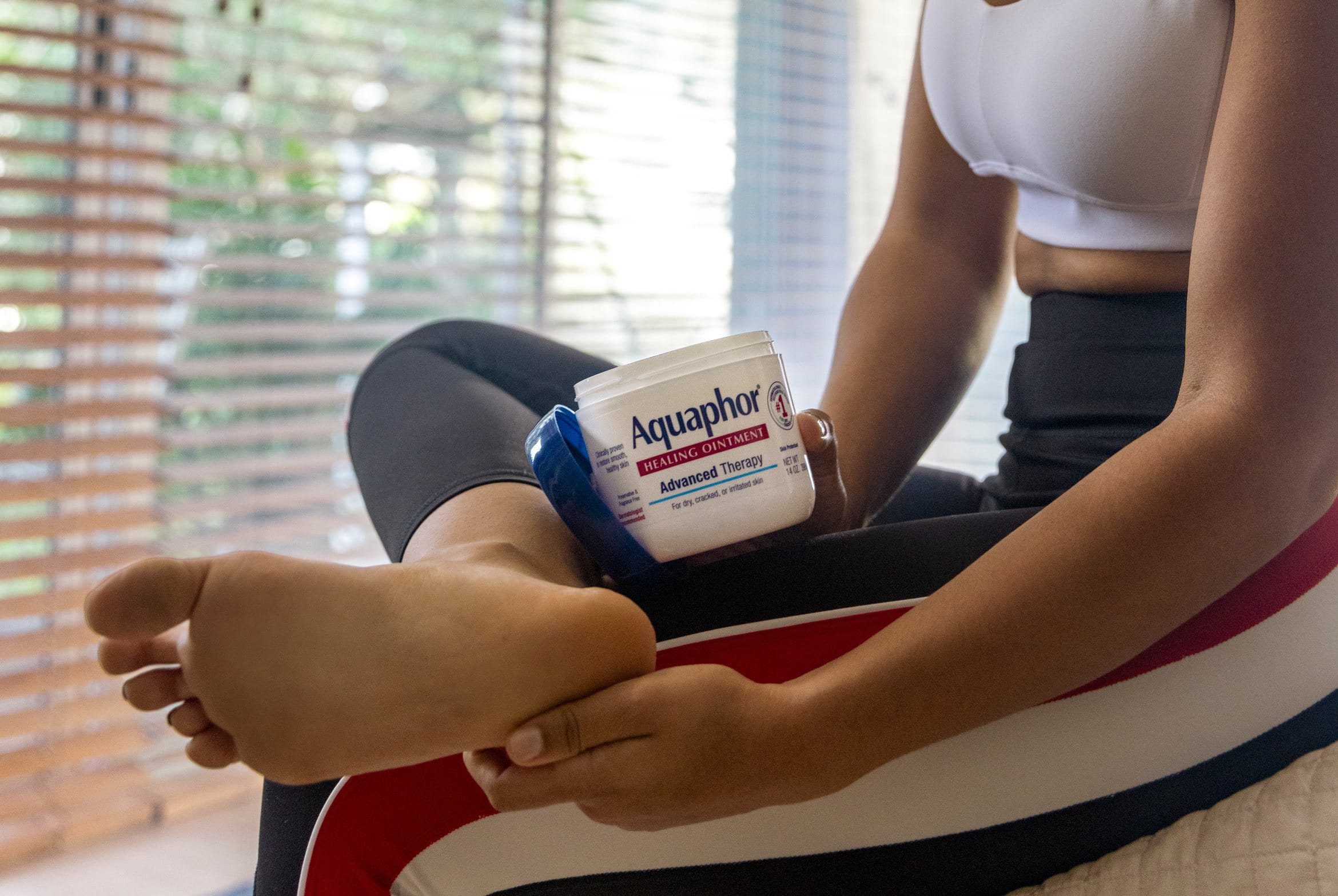Skin chafing can quickly go from mildly irritating to downright painful. Learn about what causes chafing, how to help soothe chafed skin with Aquaphor Healing Ointment, and how to help prevent it below.
What is chafing?
Chafing is skin irritation caused by friction, moisture, or irritating clothing or other material. This could be skin rubbing against skin, such as when thighs rub together while running, or when skin is repeatedly rubbed against clothing like a loose tee shirt or the waistband of a stiff pair of jeans.
Signs of chafing
Chafed skin can range from being mildly uncomfortable to very painful and inflamed. Some common signs of chafing include:
- Stinging sensation
- Tender skin
- Mild, red irritated skin
- Warm sensation on and near the affected skin
- Dry, Itchiness
- Flakiness
- May progress to blisters, broken skin, and even bleeding and swelling if severe
If you experience significant pain, inflamed skin, sensations of warmth or blisters, be sure to contact a doctor for further guidance.
Where does skin chafing most commonly occur?
Chafing most commonly occurs on areas of the body where friction against another body part or clothing is likely, such as:
- Inner thighs
- Feet
- Buttocks
- Under the arms
- Groin
- Nipples
- Under the breasts or bra-straps
What causes chafing?
Chafing is caused by repeated friction against the skin, especially when combined with moisture. Some common causes of chafing include:
Clothing rubbing against the skin
Wearing rough or stiff material can cause chafing or a ‘friction burn’, but even seemingly soft materials can cause chafing with enough prolonged friction. Wearing loose-fitting clothing can create more opportunity for fabric to rub, as opposed to tight-fitting garments like leggings where the skin is protected both from rubbing against both fabric and other skin. Points of contact like waistbands, bra straps, cuffs, collars, rough seams, and accessories like backpack straps, watches, bracelets, or other jewelry can all contribute to chafed skin.
Exercise
Exercising combines all of the elements that contribute to chafing – repeated friction against skin and clothing, plus moisture from sweating.
Skin rubbing against the skin
Aside from vigorous exercise, even just normal everyday movement, such as walking on a warm day and experiencing inner thighs rubbing together, can cause chafing.
Warm, moist areas of skin
Any place that skin folds on itself can be a source of chafing. When sweat gets trapped in the folds, it can lead to chafing from prolonged exposure to moisture, especially if friction is continued after sweat has dried and left salt residue on the skin. Warm, moist areas with particularly sensitive skin, like the groin area, are especially prone to chafing as sensitive skin can be easily irritated.
Diapers
Repeated exposure to prolonged moisture, reduced air flow, and increase in friction against diaper material can lead to chafing known as ‘diaper rash’ in babies. Similar irritation can occur in adults who need to wear incontinence products.
Sand or other abrasive material
Getting sand or other rough particles trapped between the skin and another surface causing friction can exacerbate chafing. Sticky substances can have a similar effect, as the skin can pull or stick when rubbing against other skin or fabric.
How to treat chafed skin
To help soothe chafed skin, try to give your skin time to heal and take precautions if considering resuming activities like exercise, because further friction will make the chafed skin worse, risking infection if skin breaks or bleeds.
Thankfully, chafing treatments are simple. Gently apply a skin protectant like Aquaphor® Healing Balm Stick or Aquaphor Healing Ointment, using as directed. This skin protectant provides immediate relief and protects to help heal chapped, chafed or very dry skin. It provides soothing care for chafing, as well as friction and windburn.
In case a superficial wound was created as a result of chafing, start by cleansing the wound, then smooth on a layer of Aquaphor® Healing Ointment.
Always see a doctor if a wound is deep, bleeds heavily or shows signs of infection like reddening, swelling or warmth. If you have or suspect a health problem, consult a doctor and follow medical advice.
While your chafed skin is recovering, here are some other tips to help you soothe chafed skin:
- Ensure your shower is set to a lukewarm - not hot - temperature and avoid using harsh soaps which can make the burning sensation worse.
- Avoid cleaning chafed skin with hydrogen peroxide or iodine, which can delay the healing process, and use mild soap or water instead.
- After bathing, be sure to pat skin dry, as rubbing will make the chafing worse.
- Wear comfy, loose and thin clothing to allow your skin to breathe.
- Ice or cold packs can be used for short periods of time.
How to help prevent chafing
When it comes to chafing, sometimes it doesn’t take long to cause discomfort, therefore, it’s best to learn how to stop chafing before it starts. Follow these tips to help prevent future chafing:
- If you’re doing something that is resulting in rubbing or irritating your skin, stop what you’re doing. If you must return to the activity, protect affected skin with a skin protectant ointment, balm, or bandage.
- Keep skin dry – Pat skin dry when wet and change into clean, dry clothes if your clothes get wet or sweaty.
- When exercising, use sports-oriented clothing appropriate for the activity you’re doing made from breathable, moisture-wicking materials, such as anti-chafing shorts or compression shorts.
- Help prevent nipple chafing when running or exercising by using patches or tape on the nipples, to reduce friction.
- Choose soft, breathable clothing, but be mindful of where skin may be exposed to other skin. For example, wearing a skirt in the summer months when the weather is hot or humid can lead to chafing between the legs. Wearing a pair of bike shorts or compression shorts underneathcan help protect the skin from friction, as can using an anti-chafing balm stick like Aquaphor®Healing Balm Stick on areas prone to friction.
- Apply an anti-chafing cream or skin protectant ointment for chafed skin such as Aquaphor®Healing Ointment to the places most likely to become irritated by skin-on-skin contact.
Aquaphor for Chafing
Does Aquaphor help chafing?
Yes! Aquaphor Healing Ointment® and Aquaphor® Healing Balm Stick create a barrier to help protect the skin and prevent moisture loss. In addition to providing immediate soothing relief, Aquaphor creates an ideal healing environment for the skin. Each of the ingredients in Aquaphor skin care products are tested and approved for their quality and safety, and suitability for sensitive, compromised skin.
The information provided herein is not intended to be medical advice. Nor is it intended to treat the underlying skin disease or condition. The information is provided solely to:
1. Moisturize, soften and smooth dry skin
2. Improve the appearance of the skin
3. Achieve healthier-looking skin

